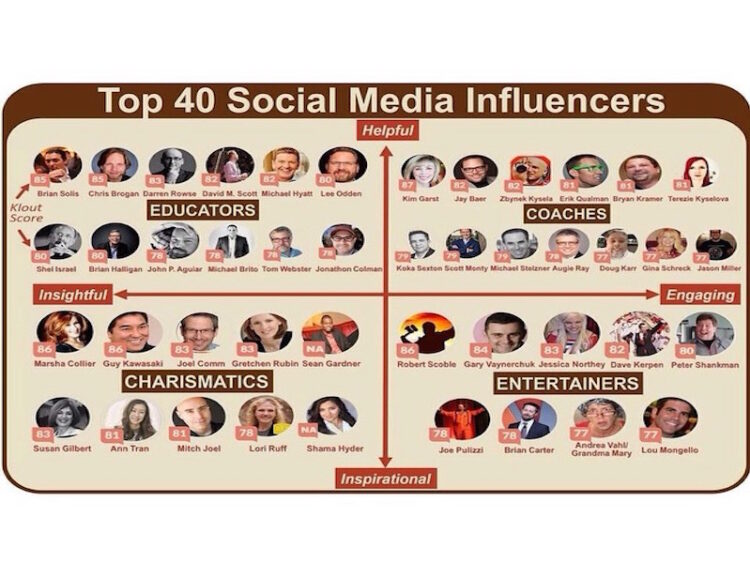
Influencers: they are an enormous aspect of marketing today, and I always recommend you look into them as an option. However, I think a lot of brands, big and small, confuse how you should actually evaluate them. How do you know it’s the right choice? How do you gauge what is working?
In order to answer these questions, I have the perfect story.
In late 1997 it was a new frontier. I was out of the gate with winelibrary.com before most people knew what the internet was (much less that they could buy wine there), and I had an email service that was doing shockingly well. Then along comes Luxury.com (yes, Luxury.com, I’m calling you out again) saying “Hey Wine Library, would you like to buy an ad on our one-million-person email list?”
At this point, my head exploded. I couldn’t even fathom a million people actually being on a mailing list. Mine was only in the tens of thousands at that point. So I spent an (at the time) ungodly amount of money, something like $40,000, a huge chunk of my marketing money for the year and went for it. I thought there was huge opportunity here to siphon off their users and build huge LTV. To me, the math made sense.
ONE COULD ARGUE THAT THIS MOMENT WAS THE SEED BEHIND EVERYTHING MY LIFE, MY COMPANIES, AND THIS BOOK ARE ABOUT.
The morning of the email, it was all hands on deck. We called in every warehouse, sales, and part time employee we had in preparation for what I thought would be our biggest sales day ever. We were getting two, three, four orders a day at that point, so I thought that maybe it could be hundreds.
Nine o’clock rolls around, the email goes out, and I’m refreshing the orders like mad. 9:03… 9:04… nothing. For the next fifteen minutes I’m completely scared until “ah! I know what it is! They must have had it scheduled for 9 Pacific time.” So I email them asking if that’s the case, and I should be waiting until noon to see results.
I get an email back two hours later saying “No. It went out at 9.” At that point, one order had come in using the code LUXURY at checkout.
I was shocked, I was scared, I was upset. But then I realized something. I realized it doesn’t matter how many people are on your list. What matters is how many of them open it. What matters is how many of them click the link. What matters is how many of them buy your stuff.
One could argue that this moment was the seed behind everything my life, my companies, and this book are about. This was when I realized it wasn’t about width, it was all about depth. It’s about how many people care, not how many people you have. And let’s call it what it is: when I say “care”, what I really mean is “will convert for me in a transaction”.
So how do you judge an influencer? Here are three quick lessons to keep in mind.
ONE: EVALUATE THE AUDIENCE
Evaluate very carefully at who is who is following the influencer in question.
If you’re going after some 15 year old kid with a fanbase of screaming girls, but you sell pampers to middle aged moms, you’re going to miss the mark. So you need to know who they’re reaching, and if it lines up with what they promise. Make sure you know they can deliver on the specific audience you are looking for.
TWO: ASSESS ENGAGEMENT
Look past the top line number of followers, and look at the actual engagement happening on each individual post.
First off, on a quantitative level, you’re looking for what that engagement is as a percentage of their overall followers. Then you need to look at each of those interactions from a qualitative standpoint to see if those interactions are just superficial, or if they’re actually interested and engaged. I may not have the biggest following on Instagram, but I know that my posts could do a hell of a lot more for OfficeMax or Staples than another user with 40x my following because my people aren’t just following me because I’m hot (although to be fair, since I’ve started working out, I’ve gotten significantly more attractive), they’re in it for a much deeper reason.
THREE: EVOLVE
Continue to assess how effective they are, and make sure the goals are being met.
As your business goals evolve, the type of influencer you are working with might shift too. Just like any other campaign, you don’t want to stick with it if you are trying a new direction, right? Influencers are no different. Keep that in mind.
BOTTOM LINE
Influencers are a tremendous way to build brand equity and get the word out there about your product, especially if you are trying to spread the word to a specific audience. But make sure everything you do maps back to the original business goals at hand. Continue to reverse engineer and evolve with the influencers you work with.
Image credit: CC by Koka Sexton



